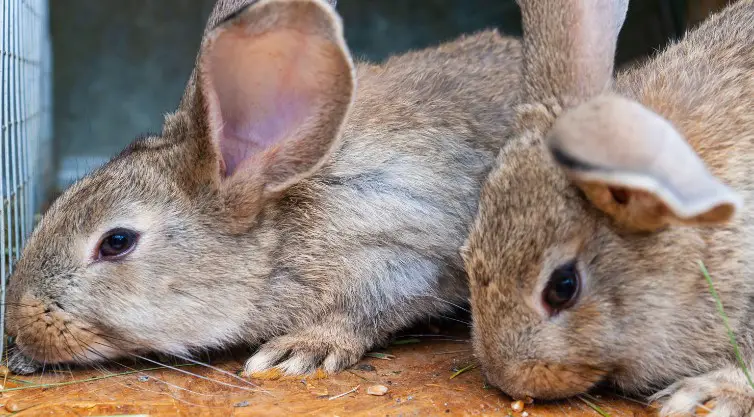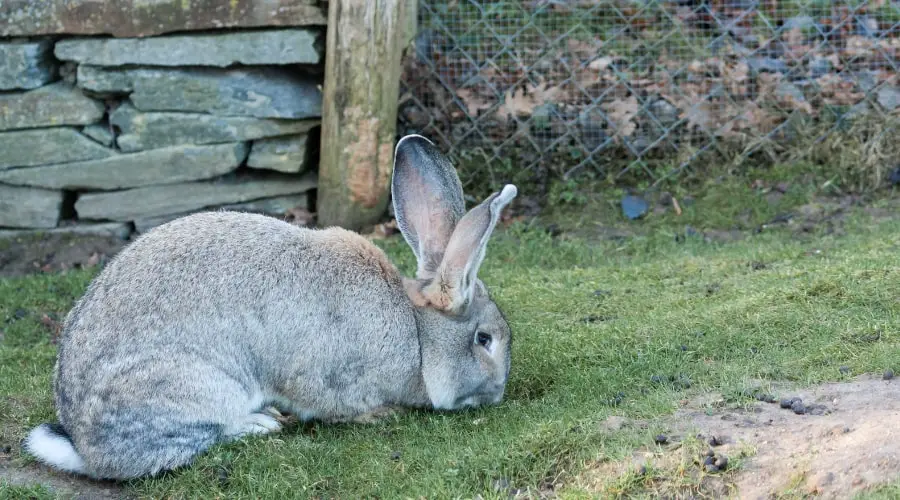Last Updated on January 27, 2024
When it comes to unusual pet rabbit breeds, the Continental Giant Rabbit and the Flemish Giant stand out as real giants. Both of these rabbits are pretty famous for their size and appearance.
That’s not all; their personalities and grooming needs are quite similar, yet there are important differences in their body sizes, home and caging, and their health care needs.
The Continental Giant is from Europe and has a slimmer body, while the Flemish Giant is from Flanders. And has a strong body and long ears that make it easy to recognize. However, there are more differences to look for!
Through this blog, you’ll know all the ins and outs of these two rabbit breeds.

The Significant Differences Between Continental Rabbit and Flemish Rabbit
Both these breeds have their special differences and this is what makes them so unique from one another. Through this section, our pet experts have thoroughly explained the ins and outs. Make sure to skim through till the end.
Appearance
Both Continental and Flemish Giants have thick and pretty dense fur, but most Flemish Giants don’t have coats as thick or long as some Continental Giants.
Continental Giants are known for their soft fur, which comes in two main colors: white and colored. The colored versions can be:
- Black
- Light gray
- Dark gray
- Agouti
- Opal
- Yellow
- And many other beautiful color mixtures
The top layer of their coat has guard hairs, and the bottom layer is soft. As they have thick fur, they often need to be groomed often.
Flemish Giants, on the other hand, have a smooth, shiny coat that usually needs less cleaning than Continental Giants. The colors of their bodies are also very pretty. They can be:
- Black
- Light grey
- Dark grey
- White
- Sandy
- Fawn
- Blue
Excerpts’ Note: Both breeds have unique and cute coat traits that add to their general appeal and make them interesting additions to the family of any rabbit lover.
Temperament and Behavior

Both Flemish and Continental giants tend to be calm, friendly, and even-tempered, which makes them great pets for families.
These giant breeds are smart and can learn instructions and directions fast. Even though the Continental Giant is also calm and easy to train, it has a personality feature that sets it apart: “energy.”
Moreover, it is slightly smaller than the Flemish Giant and tends to be more playful. It likes to play with its owners and connect with them.
But the Continental Giant may not like being held or having its feet touched as much as the other two.
It likes to play and stays pretty busy. On the other hand, compared to their Continental peers, Flemish Giants are more laid-back. They are friendly and easy-going, and they like to cuddle up with their owners.
The reason is Flemish Giants are usually less active, they are fond of touches and cuddles only. That’s not all; they are known for being patient, and they tend to be more tolerant of young children.
Size
Another major difference between Flemish and Continental Giant rabbits is how big and heavy they are.
Continental Giants can easily grow up to 3 feet long and weigh somewhere from 16 to even 20 pounds, without any trouble.
That’s not all; this rabbit breed comes with robust, well-defined hind and back legs. Plus, their ears can easily go up to a quarter of their body’s length. In general, these rabbits can live for around 5 years.
But, on the other hand, the Flemish Giant can easily weigh to an astounding 22 pounds. Moreover, some of this breed can even grow as big as an average mid-sized dog.
They also have striking legs and hindquarters, and their body comes with a noticeable semi-arched shape. The Flemish’s ears are around 8 inches long and have a lifespan somewhere from 5 to 7 years at max.
In a nutshell, both of these beautiful giant rabbit breeds are special in their own ways and make great pets for enthusiast rabbit lovers.
Home and Caging
Both Flemish and Continental Giants need excessive space to exercise and move around. These giant rabbit breeds are more active in nature than any smaller rabbit breeds, so they require more room to run, hop, and even stretch their legs.
And since they’re comparatively large in size, that’s another obvious reason they would require a larger hutch or cage.
A Continental Giant must live in a roomy cage (or even a hutch). Experts usually recommend a minimum size of 6 feet in length, 3 feet wide, and 3 feet in height.
Plus, the floor should be solid to protect their tender feet, and the sides should have wire mesh to make sure air circulation is sufficient. Moreover, you should also add ramps, platforms, and even hiding places so that they can enjoy their stay.
Similar to Continental Giants, Flemish also require a large, well-ventilated cage to live in. A Flemish rabbit should also have at least a cage dimension of 6 feet long, 3 feet wide, and 3 feet in height.
And in their cage, you can also add floors and places to climb, move, and even hide.
Health Care
To keep an eye on these giant rabbits’ general health, you as a pet owner must see a vet on a regular basis. Like all animals, rabbits can have health problems, some of which may not be obvious to their owners right away.
With regular checkups, a vet can evaluate the rabbit’s health, spot any possible health problems early, and take the right steps to fix them.
Rabbits often have problems with their teeth, and giant breeds are no different. When they go to the vet regularly, the vet can check their teeth and take care of any problems.
Proper dental care is important to make sure rabbits can eat easily and avoid problems that could be caused by teeth that don’t fit together correctly.
An expert vet can tell you important things about the rabbit’s food and nutritional needs. A professional can help make sure that these giant breeds get the right mix of nutrients, which is important for their health and longevity.
FAQs
Both breeds can make wonderful pets, but it depends on the individual’s preferences and living situation. Continental Giants are known for being more active and playful, while Flemish Giants tend to be calmer and more laid-back.
Both breeds require spacious living areas with enough room to move around comfortably. Regular grooming is necessary to keep their dense fur in good condition. Additionally, a balanced diet of hay, fresh vegetables, and pellets is crucial for their health.
Both Continental Giants and Flemish Giants can be prone to certain health issues, including obesity, dental problems, and joint issues. Regular health check-ups and a balanced diet are crucial in maintaining their well-being.
Bottom Line
In a nutshell, comparing the Continental Giant Rabbit and the Flemish Giant shows how interesting these two types of rabbits are.
Their astounding nature and remarkable size make them interesting pets for people who care about their pets and have enough room to meet their needs.
Therefore, when deciding between these cute giant rabbits, potential owners should think about where they live, how much care they can give, and what they like.
No matter which breed you choose, if you give them love, attention, and the right care, they will love and care for you in return.


